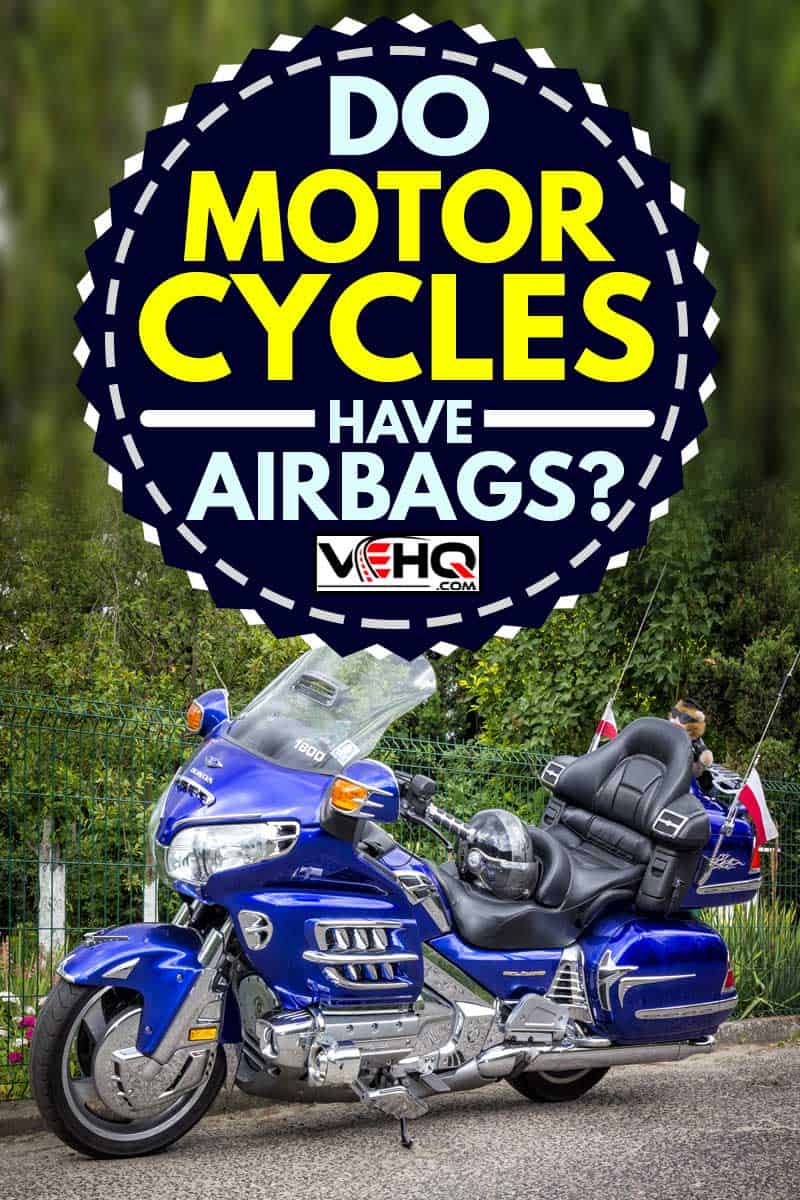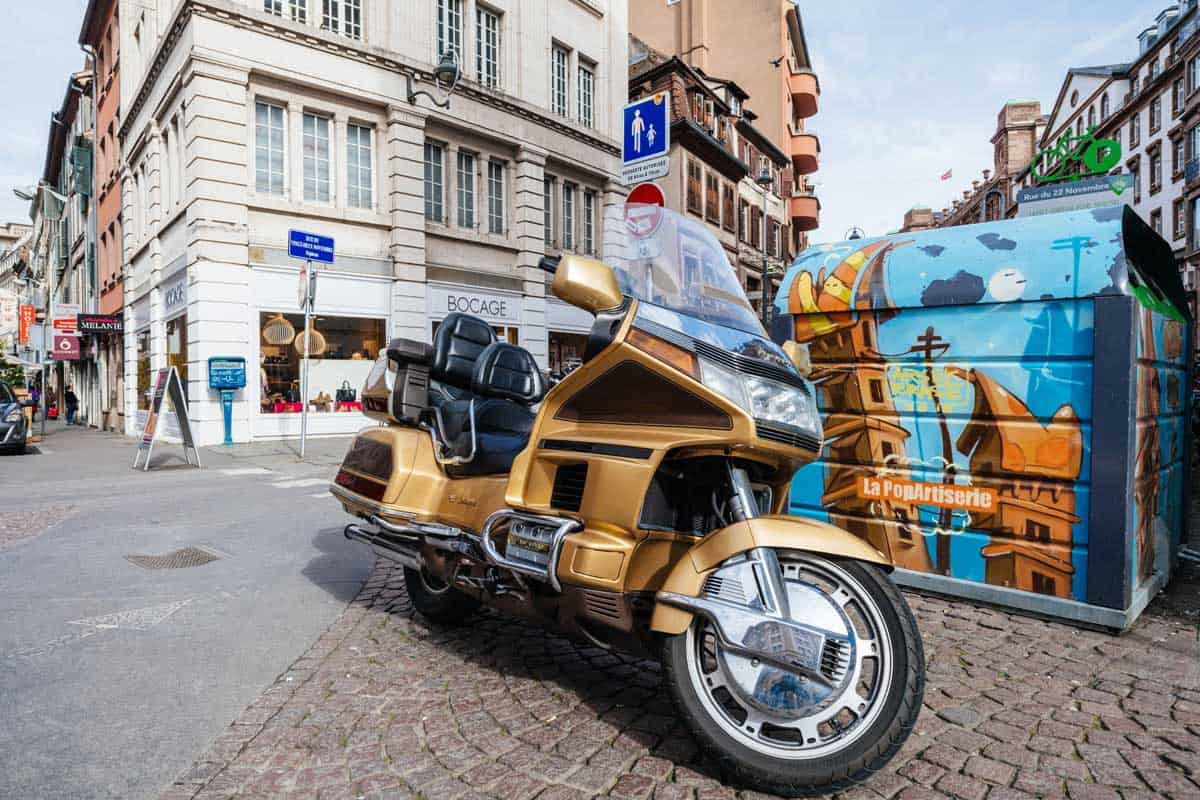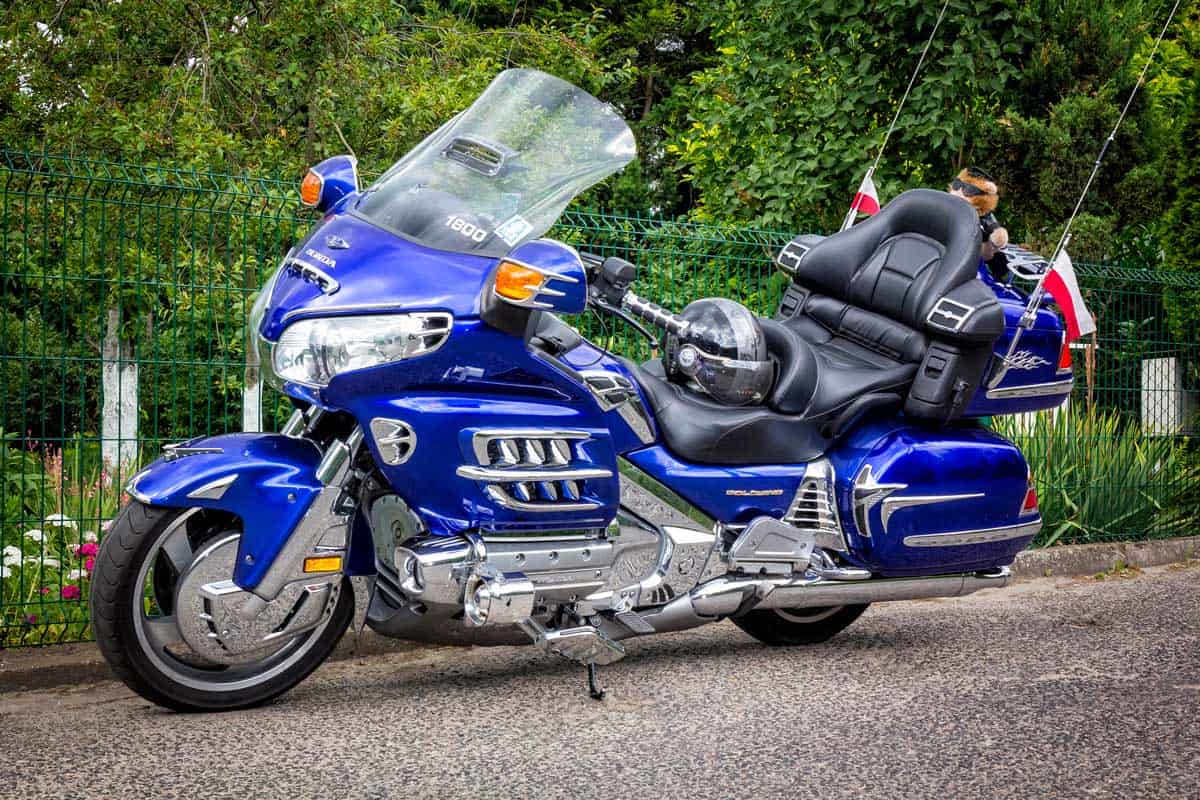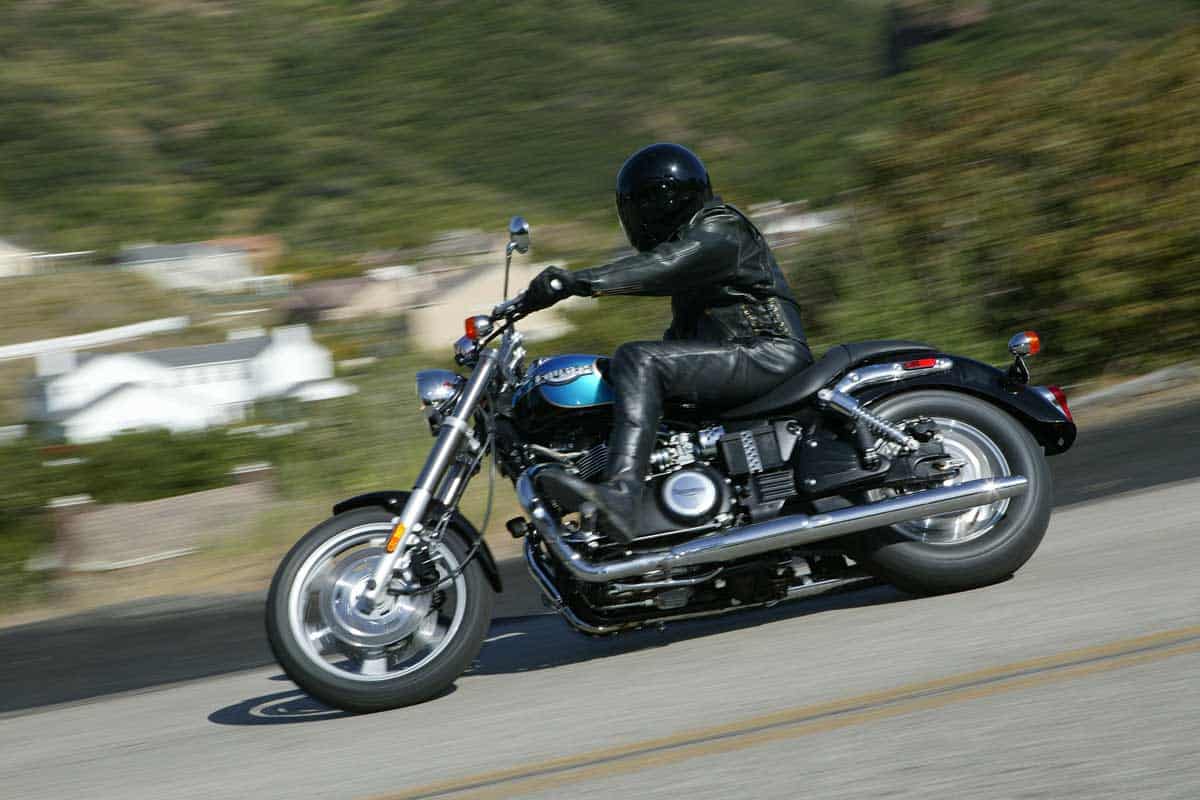 Riders must take their safety into account before getting on a bike. Staying up on precautions and features is a necessary step in this process. You’ll need to know answers to questions like do motorcycles have airbags? We researched this topic and came up with a detailed response to help.
Riders must take their safety into account before getting on a bike. Staying up on precautions and features is a necessary step in this process. You’ll need to know answers to questions like do motorcycles have airbags? We researched this topic and came up with a detailed response to help.
Most motorcycles won’t come with a built-in airbag system. At this point, the only production motorcycle airbag system exists on Honda’s Goldwing. Some riders rely on other solutions for extra protection, such as airbag vests.
If you’re interested in getting airbag protection, we’ll cover everything about this topic below. These discussions will provide a better idea about what’s your next move. Let’s ensure you feel completely safe before going on your next ride.
Everything You Need to Know About Built-in Motorcycle Airbag Systems
Built-in systems first appeared on Honda’s Goldwing in 2005 as a prototype. Honda decided to put the feature into the production model in 2006. It has been a mainstay ever since. However, these systems haven’t spread to other bikes.
Some riders have countered this issue by building them into their bikes. It’s a standard option for bikers with tourers. After all, these motorcycles have more than enough room to fit them. Others have compensated by buying other motorcycle gear equipped with airbag systems.

How Built-in Motorcycle Airbag Systems Work
As the name suggests, these systems will be built into the motorcycle itself. You’ll find them located in the bike’s cockpit, which is the optimal location. It’s placed here because about 70% of serious motorcycle crashes are frontal collisions.
Several elements come together to form the Goldwing’s airbag system: the airbag ECU, four crashes sensors, and the airbag module positioned in front of the biker. The process of how these elements work together involves five steps:
- Crash sensors detect acceleration changes resulting from a frontal impact.
- The airbag ECU will analyze signals from the crash sensors to determine whether inflating the airbag’s necessary.
- If it’s necessary, inflation will be activated in 0.015 seconds, causing the airbag to deploy.
- The airbag will start to absorb your kinetic energy as you’re thrown forward.
- It’ll continue absorbing your kinetic energy by allowing the gas to escape through the bag’s vents.
Advantages and Disadvantages of Built-in Systems

The main advantage is their ability to increase rider safety. You’ll have an added layer of protection, which other bikes don’t offer. Their front-end location is another benefit as it’ll deal with the issue of frontal collisions.
Built-in systems are more convenient than their alternatives, as well. Riders don’t have to carry extra weight on their person like they do with airbag vests and jackets. But there’s a reason built-in systems aren’t available on every bike.
The cost to make them is expensive and causes the overall price to increase significantly. As a result, many bikers can’t afford a Goldwing or the customization needed to insert an airbag system.
Goldwing airbag systems were also affected by the Takata airbag recall. Models made between 2008 and 2015 have a recall campaign to fix those affected units. If these aren’t addressed, the airbag’s inflators could rupture from excessive internal pressure.
It would cause metal fragments to shoot out through the airbag’s material. These metal fragments could move towards the rider and cause a severe injury. In simpler terms, one of these affected airbags might kill you.
What to Do After Airbag Deploys
1. Check for Injuries
If you’re awake and mindful of your surroundings, assess yourself for any injuries. Make sure any passenger on your bike is fine, as well. Medical attention should be the priority when an airbag system deploys on your bike. But please, don’t try to get it by driving your bike.
2. Turn Off Engine
In most cases, airbag deployments will turn your bike’s engine off. This action protects you from any explosions due to oil leaks. If its running, turn it off and safely step off the bike. Make sure to check your surroundings when hopping off. Other vehicles may be driving around the crash area.
3. Examine Your Bike
After determining everyone involved in the accident is okay, evaluate your bike’s damage. Call the local police to have them help with the accident’s documentation. We suggest taking pictures of your bike’s damage and making notes about the accident. You should then contact your insurance company and relay the info to them. They’ll guide you through the next steps of getting your bike repaired.
4. Replace Bike’s Airbags
Most insurance companies and mechanics will determine your bike’s totaled after an airbag deploys. But if the accident wasn’t too bad, a local motorcycle repair shop or dealership should be able to replace them. It’ll depend on the severity of your bike’s damage.
How Safe are Motorcycles?

Riding or driving any vehicle is dangerous. Motorcycles happen to be no different. But there’s an increased emphasis put on motorcycle safety for a valid reason. According to the National Highway and Traffic Safety Administration, bikers are eight times more likely to be injured. Bikers are also 35 times more likely to have a fatal crash.
Its clear motorcyclists need to put more focus on their safety than any other vehicle driver.
Do Motorcycles Have Seatbelts?
Motorcycles will not have a seatbelt due to them not improving rider safety. Their inclusion doesn’t help because a bike doesn’t have a protective frame. As a result, a belt won’t do any good when a rider smashes into a car or tumbles onto the concrete.
It will only make things worse, as the motorcycle with be fixed between their legs. These vehicles are heavy, as well, which means your limb will get crushed. You’d be much better off flying into the bushes while your bike adventures elsewhere during a crash.
How Effective are Motorcycle Airbag Vests?
Honda conducted crash test studies to show the effectiveness of these vests. The results were positive, with them reducing forward momentum by 62%. This reduction caused head trauma to fall by a whopping 83%.
In other words, these vests might not fully protect a rider but can be the difference between minor injuries and fatal ones. If you’re interested in buying a motorcycle airbag vests, here are a few top-tier options worth considering:
1. XMT-MOTO Adult Motorcycle Airbag Vest
This vest is designed to be active within 0.1 seconds of the crash taking place. This quickness is a necessity to stop severe injuries from occurring. It is a small layer to wear overtop of a motorcycle jacket, and the high-resolution textile provides more visibility at night than other brands.
Click here to see more on Amazon.
2. Hit Air MLV-RC Airbag Vest
Hit Air MLV-RC Airbag Vest
This vest features a simple design that is super light-weight, making it a breeze to wear layered over your favorite jacket. But none of these features would matter without it being useful. Thankfully, it excels in this area with its 0.25-second reaction time.



A good riding gear can be enough for a motorcycle accident, air bags can create issues if a collision happened from the front, it can disturb the rider’s grip from the handle bar.